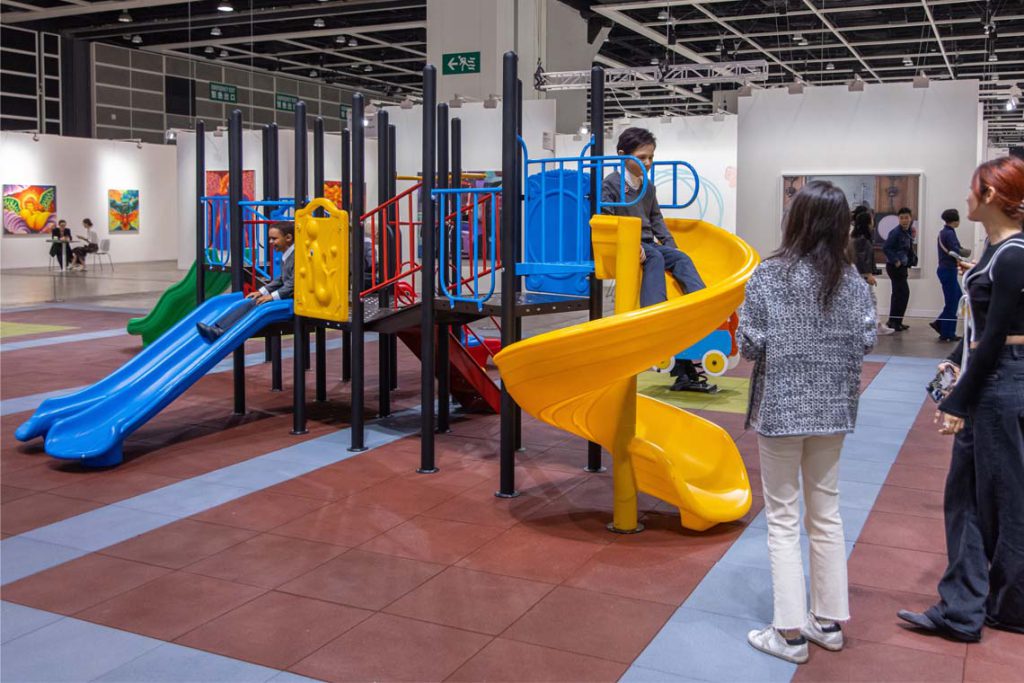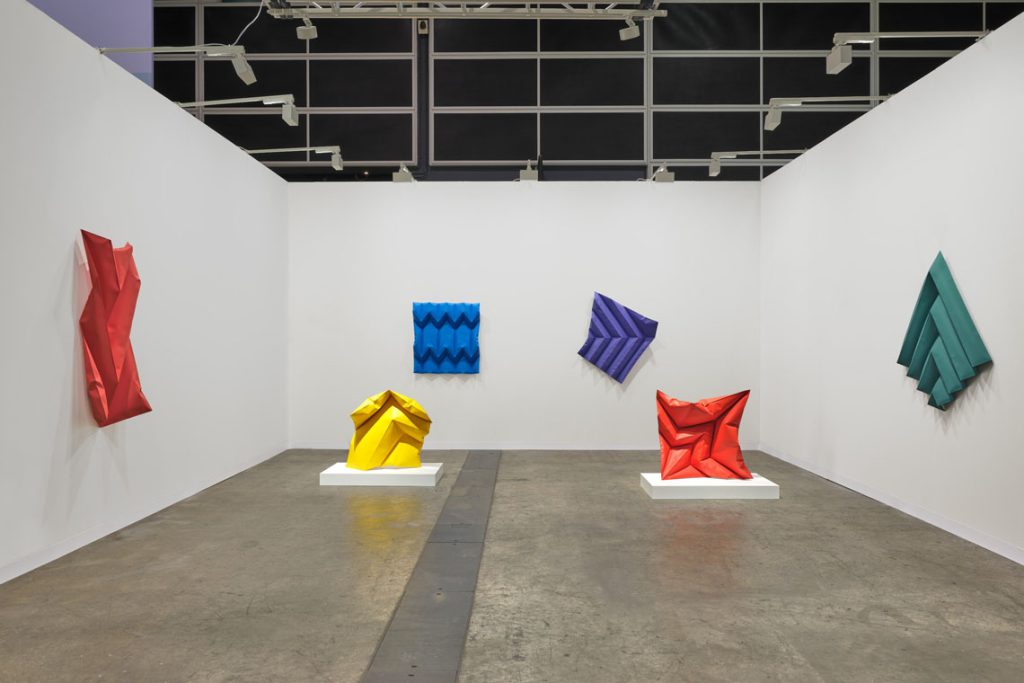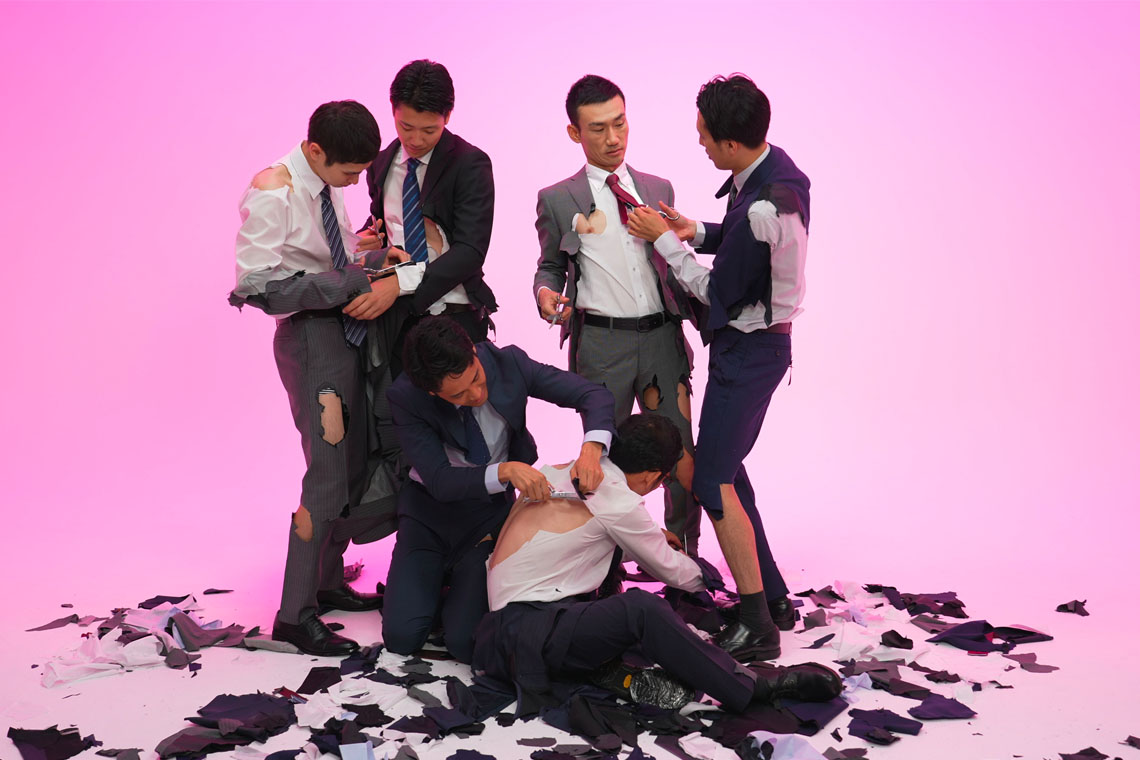Art Basel Hong Kong returned, but this time it was back to pre-pandemic proportions. With 242 galleries exhibiting across the two floors of the Hong Kong Convention and Exhibition Centre (ended 30 March) and multiple off-site events, art was definitely in the air.
Art fairs can be surreal experiences. International galleries huddled in a singular space competing for the attention of collectors and the general public, with masses of art on display inside sometimes seemingly endless exhibition halls. With that said, this year, whispers of the high quality of work on show at Art Basel Hong Kong swept across the floor as the initial impact of the fair left a good first impression, despite murmurs of the unstable market and a looming backdrop of intense global socio-political concerns. In reflection of this uneasy context, as Art Basel Hong Kong returned to ‘normal’, artists and galleries were pushing the boundaries for anything but the traditional white-cubed booth and challenging the traditional format of art fairs.
The Encounters sector, curated by Alexie Glass-Kantor and dedicated to large-scale installations and performances, flipped the norm with work such as that by Mak2 literally turning the space upside down. Copy of Copy of Copy of Copy (2024), was a seven-metre tall installation of stacked faux booths with replicas of the artist’s paintings, the top level exhibiting decaying work as projected 200 years into the future in a dystopian commentary on the art world.

Lí Wei’s Once Upon a Time (2020-24) was a more subtle reflection on socio-geopolitical structures through a hyper-realistic playground setting with world leaders featured as seven-year-old children, posed mid-play or in contemplation accompanied by ambient bird chirping
Haegue Yang’s Encounter work, Contingent Spheres (2020, 2022), was also notable in disrupting the convention centre’s booths. Rattan and textile sculptures bridged Filipino craft and mythology, including the traditional Binakol motif, with Korean folk tales and spirituality. The sounds of metal chimes were heard throughout the first-floor hall as the sculpture was occasionally activated by three performers for the duration of the fair.
With a similarly performative element was The World of Ken Kagami (2024), which the titular artist presented as a mini-survey installation including magazines, found objects, sculptures, as well as a daily performance where visitors could line up for a portrait of their “imagined genitalia” – as noted on the sign: “The artist will see your face and know how you look. There is no need to undress!!” Perhaps a tad awkward for some, but many visitors enjoyed what was undeniably an imaginative dose of humour in what can sometimes be a very serious art world.
Many booths dedicated their spaces to entire installations. In the Discoveries sector, new works created by emerging artists stood out, including Waiting Room’s presentation of Fuyuhiko Takata’s video installation Cut Suits (2023), which was a nod to Yoko Ono’s New York performance Cut Piece in 1964. The film depicts men cutting salarymen suits off each other using scissors in a performance which probes the themes of masculinity, sexuality and freedom from social norms, as well as contradictions of pleasure and violence.

Several booths in the Insights sector brought important solo presentations of artists to the broader public audience, such as Lawrie Shabibi with Shaikha Al Mazrou’s colourful sculptures investigating form and material. Similarly, the presentation of Mohsen Vaziri Moghaddam at Dastan’s – marking 100 years since the artist’s birth – displayed the late artist’s material explorations, including Untitled (2016), a large painting from the Sand Compositions series and here displayed for the first time. In the Kabinett sector, in a playful combination of ball games and visual language, ROH projects exhibited a specially conceived booth, TECHNO GAME by Udomsak Krisanamis.
Perhaps inevitably, art fairs sometimes seem to be a microcosm of society, with artworks and collecting patterns serving as signals of shared anxieties. Yet in the face of uncertain markets and unstable times, Art Basel Hong Kong managed to be a place of playful reflection on the very serious circumstances in which the world finds itself. With the fair back with its biggest edition since the pandemic, one wonders what the future might hold in the space between denial, coping and reality?



